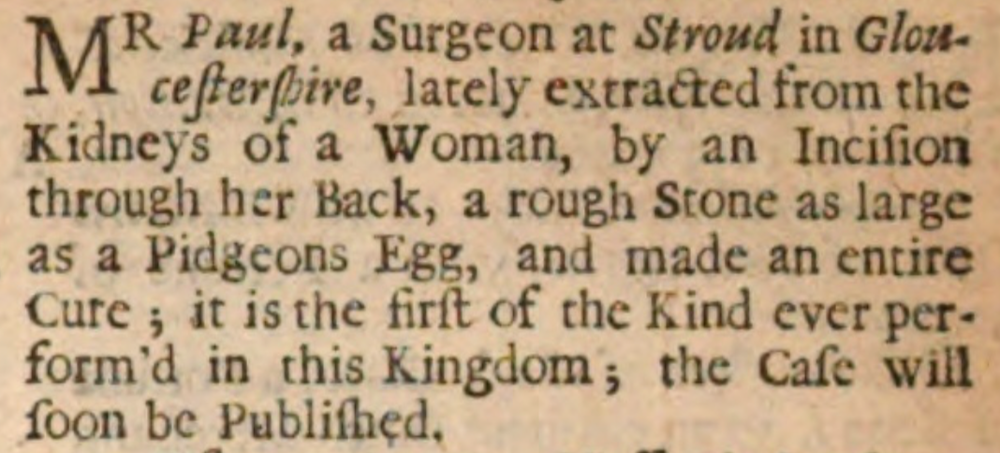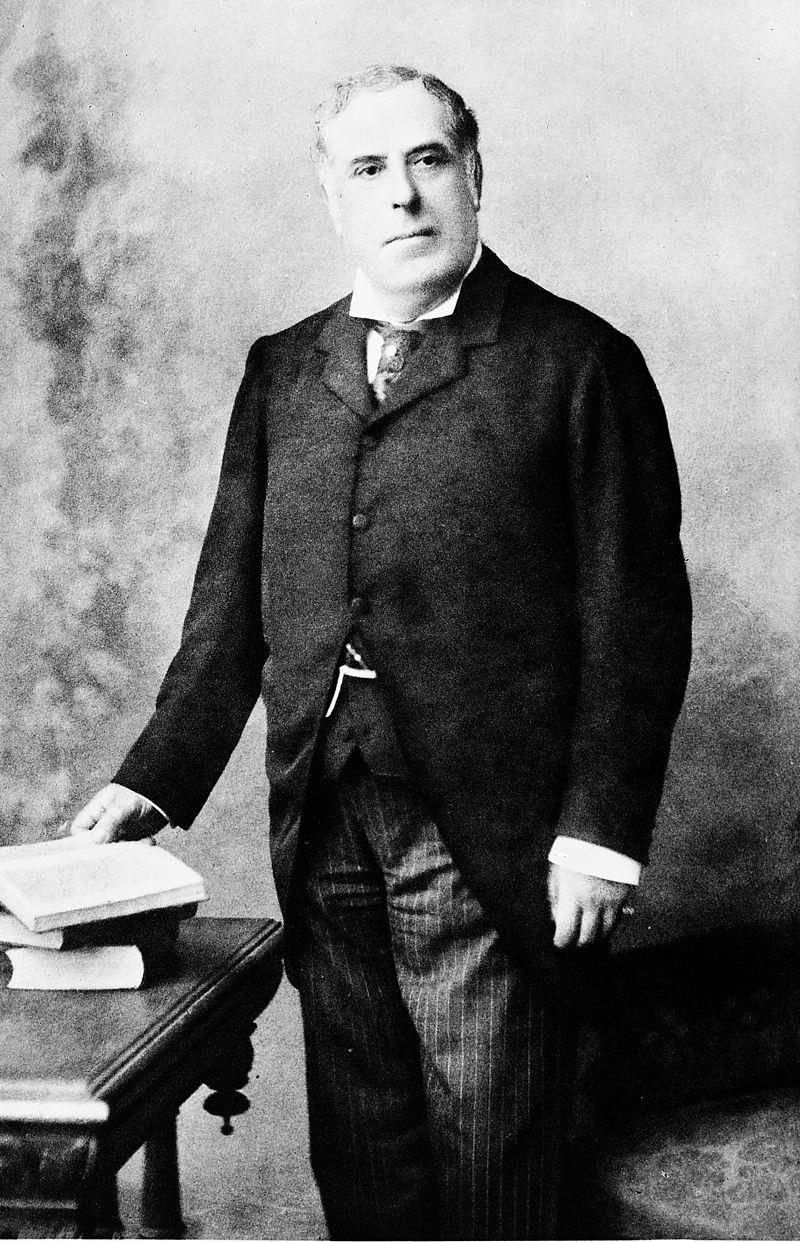The first renal stone surgery
 In early history, the only surgery done on the kidney was drainage of a renal abscess. If an obstructing ureteric stone led to pyonephrosis, the hot mass could be felt in the loin, and eventually pointed as an abscess.
In early history, the only surgery done on the kidney was drainage of a renal abscess. If an obstructing ureteric stone led to pyonephrosis, the hot mass could be felt in the loin, and eventually pointed as an abscess.
In these cases, the kidney stone presented itself to the surgeon, and it was acceptable to cut into it. Occasionally, stones discharged themselves through sinuses in the loin allowing surgeons to probe and explore down towards the kidney, but no one dared cut into a kidney blindly. Although Serapion the Elder (d 930 AD) suggested that:
“... Some of the Ancient Orders extracted kidney stones with a knife, cutting back into the loin … "
it is not clear who these surgeons were, but Serapion goes on to say that it was dangerous and should not be done.
The Legend of the Archer of Meudon
There is a story of an archer of Meudon, near Paris. In January 1475, he was due to hang for the crime of sacrilege (he had stolen from a church). The condemned man suffered from chronic loin pain and the doctors of Paris petitioned the King (Louis XI) to allow them to open his abdomen to “look at the sites where these diseases are formed in the human body”. This vivisection was carried out and “his entrails were replaced”; he survived and was pardoned. Some believe this to be an early example of nephrolithotomy but, even if it were true, there is no record of this operation being on the kidney, or of any stone being removed.
The Case of the English Consul
More feasible, perhaps, is the case described by Charles Bernard FRS (1650 - 1711) writing in 1695. Bernard describes the case of Mr Thomas Hobson, Consul for the English in Venice,who is said to have had a kidney stone extracted by Dominic de Marchetti (1626 - 1688), the Professor of Surgery at Padua. Hobson was in such pain that he persuaded Marchetti to cut into his loin and extract some stones. Marchetti;
“... began with his Knife, cutting gradually upon the Region of the Kidney affected, so long, till the Blood disturbed and blinded his Work so that he could not finish it at that attempt: where fore dressing up the Wound till the next Day, he then repeated and accomplished it, by cutting into the Body of the Kidney, and taking thence two or three small Stones, he dressed it up again … "
Another stone discharged through the wound some time later, as his wife was dressing it.
The story was told to Charles Bernard, a well-known London surgeon, by Thomas Hobson in the Castle Tavern on Paternoster Row in London some ten years later. The story seems plausible, as the surgeon had to attempt twice to cut down onto the kidney suggesting that there was no pointing abscess. The impression given was that Marchetti had to be persuaded to operate: if there had been an obvious abscess or fistula, a reluctance to operate would have been unusual because any surgeon would be happy to operate in that situation.
Mr Paul of Stroud
Reported  in the Gentleman’s Magazine of August 1733, was the case of Mr Paul, a surgeon of Stroud, who apparently cut out a stone the size of a pigeon’s egg from a woman’s kidney, through an incision in her back. Apart from this tantalising snippet (right), there is no other evidence of this case.
in the Gentleman’s Magazine of August 1733, was the case of Mr Paul, a surgeon of Stroud, who apparently cut out a stone the size of a pigeon’s egg from a woman’s kidney, through an incision in her back. Apart from this tantalising snippet (right), there is no other evidence of this case.
The American case
Another candidate for the first nephrolithotomist was William Ingalls (1813 - 1903).
In 1872, at the Boston City Hospital, he removed a large stone from the kidney of a woman who had refused nephrectomy. However, the patient already had a chronic discharging fistula.
Maria M’s Stone
 The first open nephrolithotomy was carried out by Sir Henry Morris (pictured right) on Miss Maria M, described as "a well nourished, rather stout, short girl with florid cheeks”, who was a 19-year-old domestic servant.
The first open nephrolithotomy was carried out by Sir Henry Morris (pictured right) on Miss Maria M, described as "a well nourished, rather stout, short girl with florid cheeks”, who was a 19-year-old domestic servant.
She had been suffering from intermittent loin pain for the previous 11 years. A diagnosis of renal stone disease was made by Dr Sydney Coupland (1849 - 1930), the attending physician at The Middlesex Hospital.
There were, of course, no X-rays so, based on this clinical diagnosis of an accurate history and observation of haematuria, at 13.30hr on 11 February 1880, Henry Morris, with a chloroform anaesthetic, cut into Maria’s right loin and delivered a 31 grain (2 gram) mulberry stone (pictured at the top of this page).
The wound was closed with three silk sutures. By May 1881, she had returned to domestic service and was well, apart from a small discharging wound sinus.
← Back to Kidneys